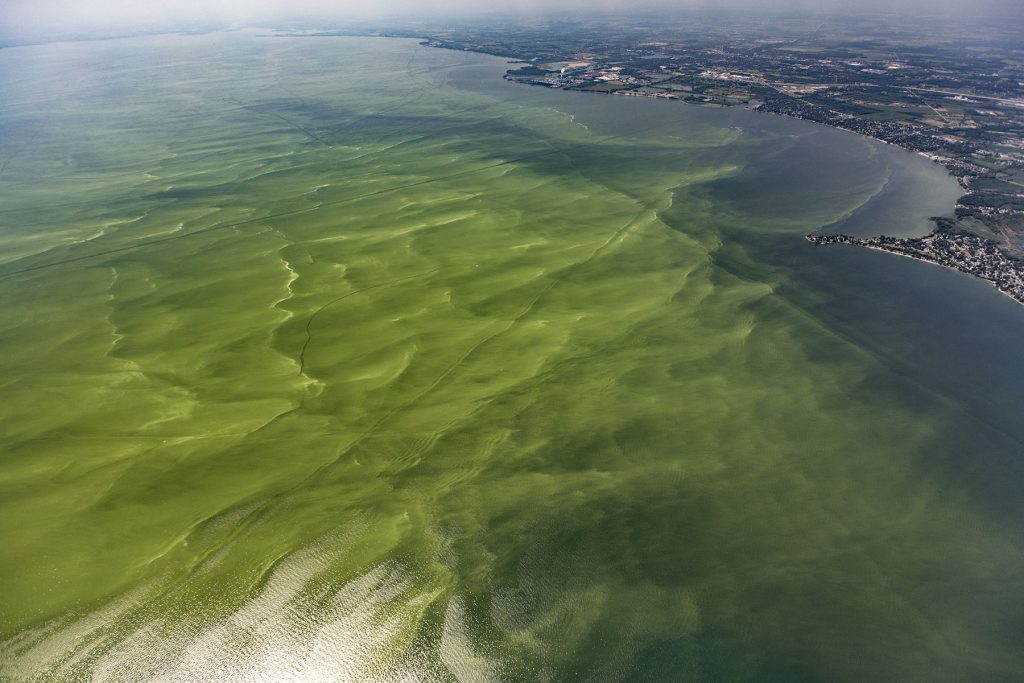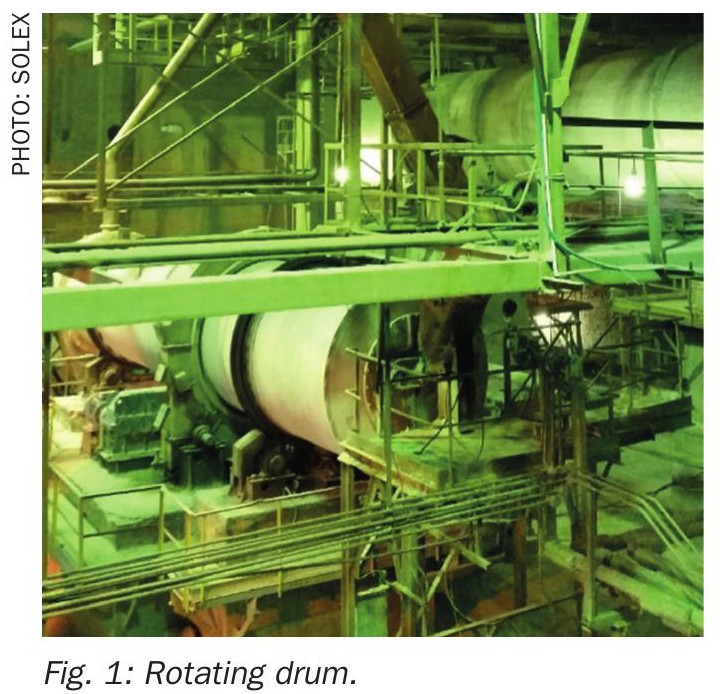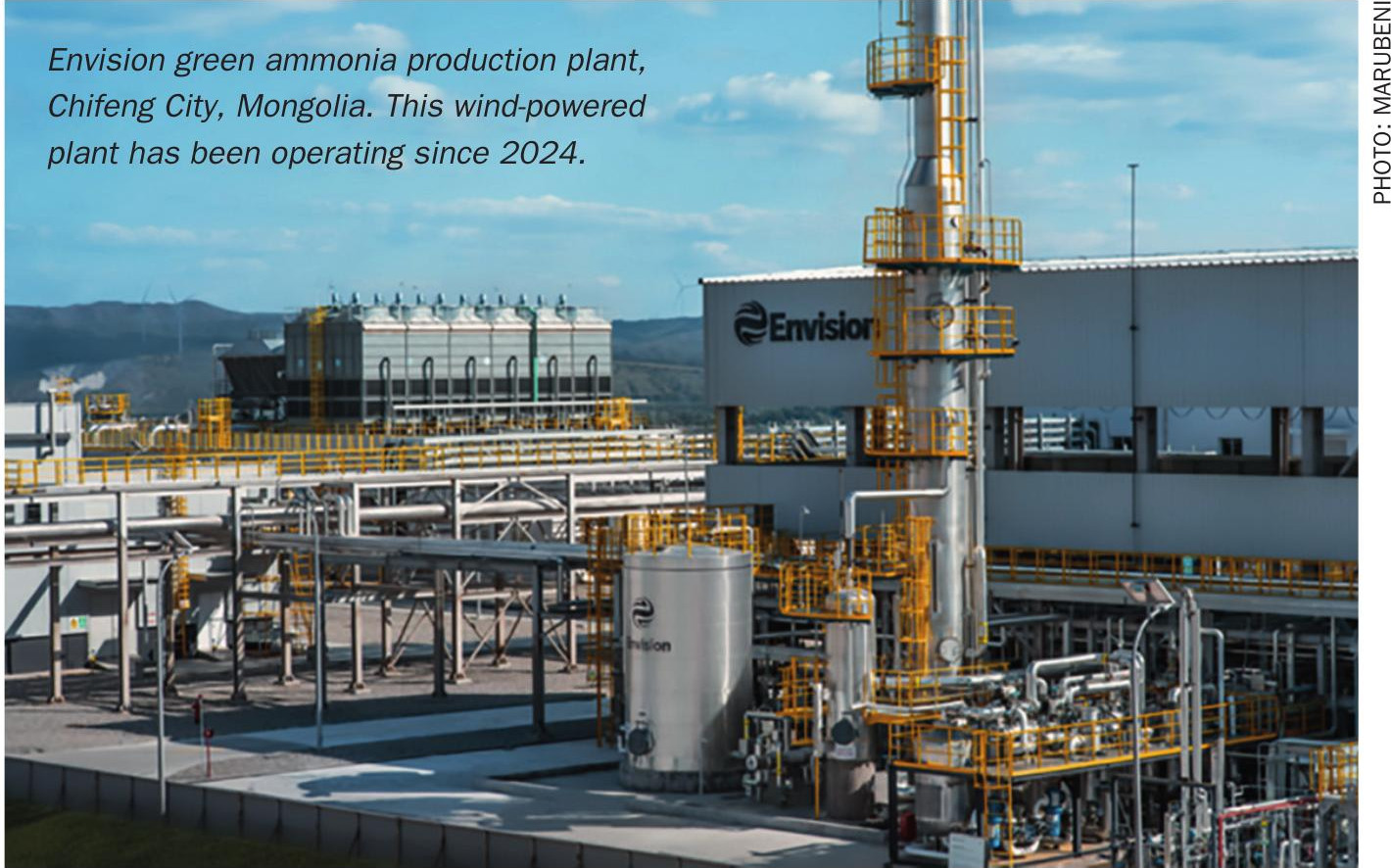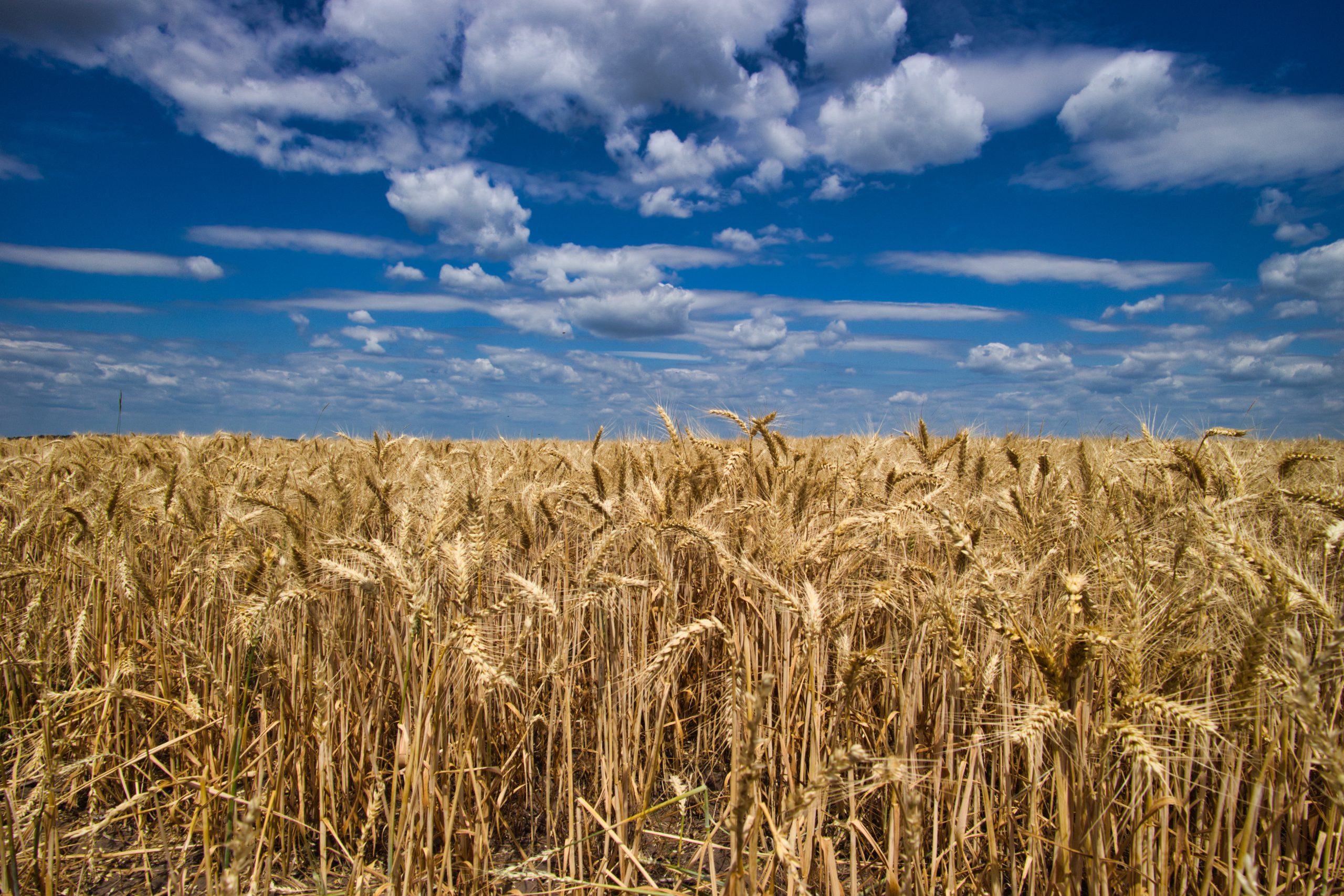Nitrogen+Syngas 397 Sep-Oct 2025

16 September 2025
Nitrate wastes as a source of ammonia
WASTE NITRATES
Nitrate wastes as a source of ammonia
The past few years have seen a rapid increase in attempts to generate ammonia from streams of nitrate-polluted wastewater, but how practical are these methods?

Nitrogen is an essential element for life, and one of the key constraints on plant growth, particularly food grains such as wheat, corn, rice etc. And while it surrounds us in the atmosphere, converting this into a form usable by plants – generally as a nitrate – takes place at a slow pace in nature, either via atmospheric lightning discharges; the conversion of nitrogen to nitrates via rhizobia bacteria in the root nodules of legume plants; or the decomposition of plant or animal wastes or manures.
Converting nitrogen directly into ammonia via the Haber-Bosch process has allowed the rapid expansion of the mineral fertilizer industry and the consequent increase in farming yields achieved worldwide in the 20th century, and allowed the expansion of human population to 8.2 billion people. However, over-application of nitrogen in the environment has become a problem in many regions. Over-fertilization can lead to a lack of oxygen in lakes, rivers, or seas. This results in the mortality of fish, the loss of species, and a decline in bathing water quality. Sensitive plants that depend on nitrogen-poor soils disappear. Nitrogen oxides from traffic and industry produce ground-level ozone and particulate matter, while the use of fertilizer releases nitrous oxide, a major greenhouse gas.
Excess nitrogen in the environment is reflected in the soil surplus, which is calculated as the difference between inputs (e.g. fertilizers, animal manure, or atmospheric deposition) and outputs (e.g. plant growth). This nitrogen surplus has increased rapidly in Europe as shown by data published by Germany’s Helmholtz Centre for Environmental Research (UFZ) in 20221, reaching a peak in the mid-1908s because of the increased use of synthetic fertilizers. Since then the surplus has decreased to an extent as a result of the EU Nitrates Directive, reforms to the Common Agricultural Policy (CAP), and economic and political changes. There have also been technological advances such as more precise fertilization. However, the nitrogen surplus has remained at a high level since the 2010s.
Impetus for wastewater treatment
In an attempt to reduce this nitrogen surplus, in April 2024 the EU launched a public consultation on the Nitrates Directive to assess if it remains fit for purpose. EU member states are required to identify waters polluted by nitrates and waters that are eutrophic (i.e. polluted with algal blooms which feed on nitrates and which reduce oxygen content in the water), affecting the aquatic ecosystem’s balance, and implement measures aimed at preventing and reducing water pollution caused by nutrients. Furthermore, the EU Water Framework Directive aims for all European surface waters to achieve “good status” by 2027, together with the Urban Wastewater Treatment Directive (UWWTD) and the Nitrates Directive.
While this provides additional impetus for water treatment and more targeted fertilizer application, with an increasing focus on the so-called ‘circular economy’, the past few years have also seen an increasing interest in potentially recovering nutrients from wastewater streams, with the potential for their reuse as a fertilizer.
Electrochemical conversion
The suggested method for this is the electrochemical conversion of nitrate to ammonia, ideally using electricity that is ideally produced from sustainable sources, like wind and solar energy, producing ammonia at room temperature. Large-scale application of electrocatalytic denitrification of water has previously been limited by the lack of catalysts with a high selectivity of nitrate reduction to N2, but nitrate reduction to ammonia is much easier from a catalytic point of view as no N-N triple bond needs to be formed, and in recent years there has been considerable interest in the development of catalysts that actually aim at the selective electrocatalytic reduction of nitrate to ammonia. A number of promising candidate materials have been identified2, including titanium dioxide with promoters, copper oxide nanowire arrays, electrochemically reduced to Cu/Cu2O, copper-nickel alloys, titanium, and ruthenium nanoclusters.
Various types of wastewater have previously been used, or modelled, in studies on electrocatalytic denitrification, though nitrate concentration is a limiting factor. A high concentration of nitrate makes the production of ammonia easier and more cost-efficient, but limits the type of wastewater that can be utilised. The highest level of nitrate is found in low-level nuclear waste, a wastewater stream that has extensively been studied in electrocatalytic denitrification as biological treatment is not possible. Lower concentrations of nitrate are found in industrial runoff, for example from the textile industry.
While nitrate polluted groundwater from agricultural runoff is most widely available, nitrate concentrations have been found to be too low for an electrolysis process, with the electrical energy input leading to side reactions. A possible solution is to concentrate the nitrate prior to reduction, though of course this adds an extra step to the process and increases cost, although it also encourages decentralised ammonia production near point of need and provides clean water for aggregation of farmland at the same time. Some Chinese researchers have instead used a membrane structure in which iron was atomically dispersed within a dense woven carbon nanotube framework. An applied voltage draws the nitrate ions through the small pores, where they are reduced to ammonium3. The process claims four times greater efficiency than conventional electrochemical methods.
Cost
The Haber-Bosch process consumes approximately 4 kWh of energy per kg of ammonia produced. Comparable figures for some of the processes mentioned above report an electrocatalytic rate for ammonia production of e.g. 22 kWh for the RU nanocluster process, based on the cell voltage, partial current density, and production rate2. The price of electricity for electrocatalytic ammonia synthesis will represent the largest proportion of operating expenses, assuming that nitrate-rich wastewater is readily available and the reaction takes place at room temperature. The Ru nanocluster catalyst with an energy consumption of 22 kWh/kg ammonia would represent approximately 4.8 kWh for the production of 1 kg of NH4 NO3. Based a Dutch electricity cost of €0.137/kWh, this results in production costs of approximately $776/tonne ammonium nitrate, excluding investment and maintenance costs. While high, this is not far distant from current delivered EU AN prices of around $500/t, and the production costs could be reduced by making use of locally produced electricity from renewable sources.
Early days
At the moment this is still a new and developing field of study, and so far still confined to laboratory-scale processes, but results have shown some promise for the concept of selectively producing ammonia electrochemically from nitrate. Van Langevelde et al have noted that, even if the catalytic performance is good, large volumes of wastewater need to be dealt with, resulting in the need of a large reactor and long reaction times, and it is difficult to foresee if sufficient amounts of wastewater can be supplied. It is expected that concentration of nitrate prior to the reduction process will be necessary to avoid dealing with large volumes of wastewater, requiring further research. No studies on the large-scale treatment of real wastewater from different sources have yet been carried out. Even so, the fact that on a first analysis, the catalysts developed for the reduction of nitrate can compete with current technologies for ammonia production, and a rough estimation suggests that the fertilizer price can compete with fertilizer produced in the Haber-Bosch process2.
However, Huang et al argue that the feasibility of large-scale ammonia production remains highly questionable due to the insufficient concentration and low capacity of nitrates feedstock in real wastewater. Taking the example of ammonium nitrate, they calculate that about 17% of nitrate ions would leach to the groundwater as nitrate contaminants annually, which, even if those nitrate contaminants could be successfully converted to ammonia with 100% selectivity, would only represent a total of about 2 million t/a of recovered ammonia5. This, they argue, is “relatively insignificant” when compared to the nearly 200 million t/a of ammonia produced annually via the conventional Haber–Bosch process, even without considering the energy needs for nitrate collection and reduction, ammonia separation, purification, and compression. Instead they advocate for nitrate conversion to N2, which can be safely released to atmosphere or, in the case of wastewater containing nitrates at high concentrations, recycling and purifying nitrate salts to produce NO3− chemicals or fertilizers rather than converting them into ammonia.
References






